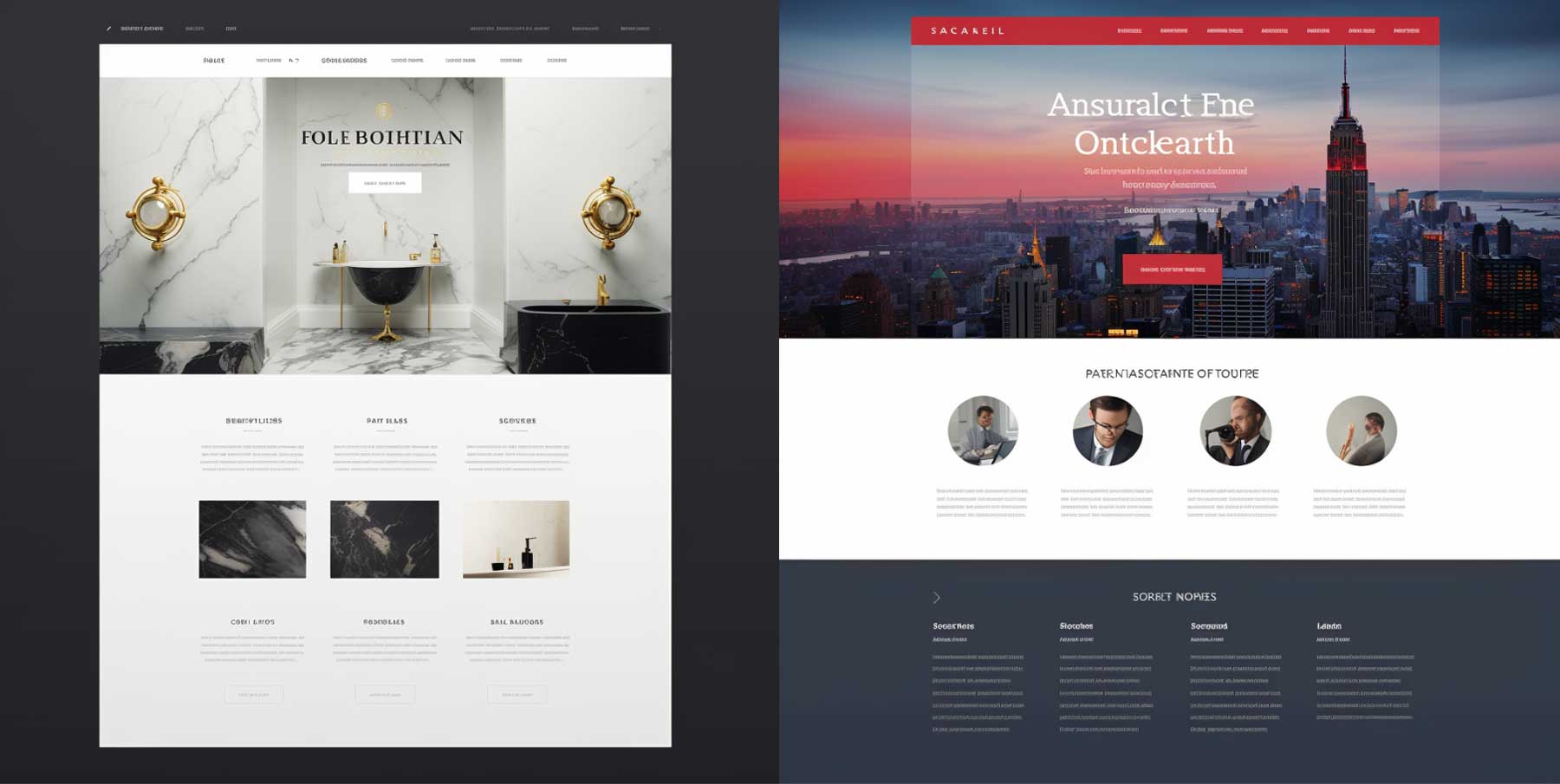Master the Art of Internet Style With These Expert Idea
In today's electronic age, having a well-designed and visually attractive web site is crucial for any organization or specific looking to make a mark online. In this discussion, we will check out experienced suggestions and techniques that will certainly not just enhance the visual charm of your web site however likewise enhance its use and efficiency. From picking the right color palette to incorporating effective call-to-actions, these insights will help you create a website that not only captivates your target market yet additionally drives outcomes.
Picking the Right Color Scheme
When selecting a color combination for web design, it is necessary to think about elements such as brand identification, target market, and general visual objectives. The colors used in a site can significantly affect how customers view and interact with the site. For that reason, it is important to choose colors that line up with the brand name's identification and values. For instance, a technology firm may opt for a modern-day and streamlined color combination, while a children's brand may select brilliant and lively shades.
In enhancement to brand identity, the target market should likewise be considered when choosing a shade scheme. Different age teams and demographics might respond in a different way to particular shades. Younger audiences may be much more brought in to vivid and bold shades, while older target markets might favor more soft and advanced tones. Comprehending the choices and assumptions of the target market can assist produce a interesting and visually enticing internet site.
Last but not least, the overall aesthetic objectives of the internet site should be thought about when selecting a color palette. The color pattern need to enhance the total style and layout of the site, creating a cohesive and aesthetically attractive experience for individuals. Whether the objective is to develop a relaxing and peaceful setting or an energised and dynamic atmosphere, the shade combination need to be carefully picked to accomplish the desired visual.

Developing Straightforward Navigating
To enhance the user experience, it is vital to create instinctive and easy-to-navigate food selections for internet sites. Straightforward navigating is critical for guiding visitors through the various sections and pages of a website, allowing them to rapidly locate the web content they are seeking. When making the navigating food selection, simpleness is essential. Avoid cluttering the food selection with a lot of choices, as this can overwhelm users and make it difficult for them to choose. Rather, concentrate on giving succinct and clear labels for each food selection thing, using acquainted terms that individuals can easily understand.

Along with clear tags and sensible company, it is vital to make the navigating food selection quickly obtainable. Put it in a famous place, such as at the top of the web page or in a fixed setting, to make sure that customers can conveniently discover and access it from anywhere on the site. Think about utilizing a receptive layout technique to make sure that the navigation menu continues to be usable and easily accessible on various tools, including smart phones and tablets.
Incorporating Receptive Style Techniques
In order to maximize web site performance across various tools, integrating receptive style strategies is important. Receptive style is a website design method that allows sites to adjust and respond to various screen dimensions and alignments. With the enhancing use tablet computers and smartphones, it is my site essential for internet designers to produce websites that supply an optimal viewing experience for users on all gadgets.
One of the essential strategies in responsive design is using fluid grids. Rather than designing fixed-width designs, internet designers create versatile grids that readjust and resize based upon the display size. This makes certain that the material on the internet site remains understandable and obtainable, regardless of the gadget being utilized.
One more important technique is making use of versatile pictures and media. By establishing the maximum width of video clips and pictures to 100%, they will instantly reduce to fit smaller screens. This stops photos from being removed or misshaped on smart phones.
Furthermore, receptive layout entails making use of media queries to apply different styles and designs based on the gadget's screen dimension. This enables internet developers to produce a smooth experience by personalizing the discussion of web content according to the tool being made use of.
Optimizing Internet Site Rate and Efficiency
One important element of website design is enhancing web site rate and performance. In today's hectic digital click to find out more world, users have little patience for slow-loading websites. A slow website can lead to a poor user experience, high bounce prices, and reduced internet search engine positions. To make certain that your internet site does at its finest, there are a number of methods you can execute.
First of all, optimizing photos is crucial for boosting site speed. Photos must be correctly compressed and resized to lower their data dimension without compromising quality. This can be done using picture optimization tools or plugins.
An additional crucial element to take into consideration is web site caching. Caching involves storing fixed versions of website so that they can be swiftly retrieved rather than creating them from the ground up each time a user checks out the site (Webwize Tomball Website Design). This significantly reduces filling times and improves general efficiency
Minifying CSS and JavaScript data is an additional effective method. Getting rid of unnecessary whitespace, comments, and lowering code complexity can considerably improve site rate.
Implementing Effective Call-to-Actions
Producing engaging and persuasive call-to-actions is a crucial aspect of efficient website design. A call-to-action (CTA) is a prompt or instruction that motivates individuals to take a details activity on a website, such as purchasing, registering for an e-newsletter, or speaking to the firm. Implementing effective CTAs can significantly enhance individual interaction and conversion prices.
To produce engaging CTAs, it is vital to make use of succinct and clear language that shares the worth proposition and benefits of taking the desired action. The CTA should be visually prominent on the web page, making use of contrasting shades and layout components that draw the user's focus. In addition, making use of activity verbs and producing a feeling of seriousness can even more enhance the effectiveness of the CTA.
Furthermore, it is very important to place the CTA purposefully on the web page. Putting it above the layer, where it is immediately noticeable to individuals without needing to scroll, can considerably increase its presence and click-through prices. It is also advantageous to test various variations of CTAs to determine which ones reverberate ideal with users and drive the greatest conversion prices.
Final Thought
In conclusion, understanding the art of website design needs focus to different elements such as shade combination selection, straightforward navigation, receptive style techniques, internet site speed optimization, and effective call-to-actions. By carrying out these professional pointers and techniques, internet developers can create functional and aesthetically appealing web sites that enhance customer experience and drive desired activities.
The shades utilized in a website can substantially influence exactly how users view and interact with the site.In order to maximize website performance throughout various gadgets, incorporating responsive style techniques is vital. Receptive design is a web layout approach that enables internet sites to react and adjust to different screen dimensions and alignments. With the increasing use of smart devices and tablet computers, it is vital for internet designers to create web sites description that give an optimal viewing experience for individuals on all gadgets.
